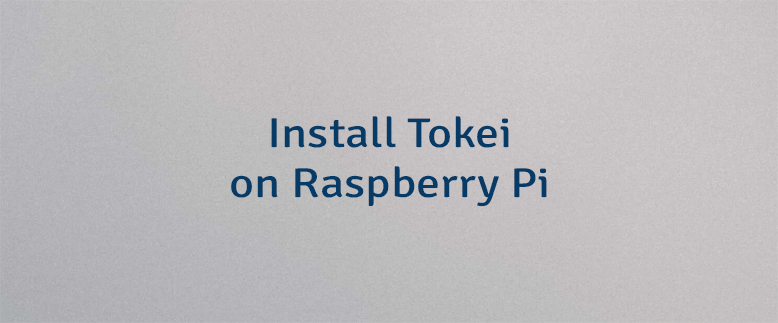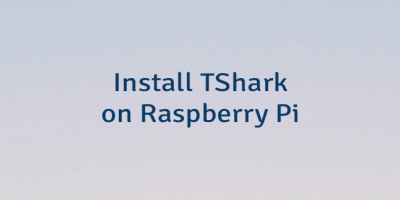Tokei is a command line tool which allows to count blank lines, comment lines, and physical lines of source code. This tool displays results in the table. Various programming languages are supported by Tokei.
This tutorial shows how to install Tokei on Raspberry Pi.
Install Tokei
Connect to Raspberry Pi via SSH and download the latest tar.gz file from releases page of the Tokei repository:
sudo wget -qO tokei.tar.gz https://github.com/XAMPPRocky/tokei/releases/latest/download/tokei-arm-unknown-linux-gnueabi.tar.gzRun the following command to extract a tar.gz file to /usr/local/bin directory:
sudo tar xf tokei.tar.gz -C /usr/local/binNow tokei command will be available for all users.
We can check Tokei version as follows:
tokei --versionRemove unneeded tar.gz file:
rm -rf tokei.tar.gzTesting Tokei
For testing purpose, create a main.c file:
nano main.cAdd the following code to a file:
#include <stdio.h>
// Hello world program
int main() {
printf("Hello world\n");
return 0;
}Next, run tokei command to count lines of code:
tokei main.cYou will get the following results:
===============================================================================
Language Files Lines Code Comments Blanks
===============================================================================
C 1 8 5 1 2
===============================================================================
Total 1 8 5 1 2
===============================================================================The tokei command accepts directory as argument. Then given directory and all subdirectories will be analyzed. For example, download the Tokei source code from GitHub:
wget -qO tokei-master.tar.gz https://github.com/XAMPPRocky/tokei/archive/master.tar.gz
tar xf tokei-master.tar.gzExecute tokei command to analyze provided directory:
tokei tokei-masterUninstall Tokei
If Tokei is no longer necessary, you can remove executable file:
sudo rm -rf /usr/local/bin/tokei



Leave a Comment
Cancel reply